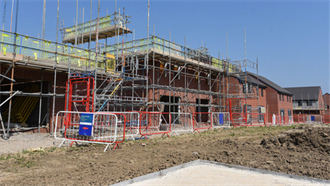The residential sector for institutional investors is larger and more diverse than it has ever bee, according to Patrizia's European Residential Insights 2024/2025 report.
Key takeaways from the report – which has been providing insights on the European residential sector on an annual basis for over 10 years – include: housing markets are fundamentally well-positioned; markets are stabilising; student housing is proving to be a particularly attractive investment proposition; and knowledge of the evolving regulatory landscape is key.
The report notes that the residential market has proven its resilience and will remain a place to be for investors with a modest risk appetite. In a world in transition, residential markets are well-placed due to the strong fundamentals underpinning the occupational market. Investors are acting in a market supported by structural tailwinds: the ‘living’ opportunity in Europe is broadening, making the residential sector larger for institutional investors and more diverse than it has ever been.
Marcus Cieleback, Patrizia's Chief Urban Economist, who leads on the report, said: 'There is a bright forecast to be made for the sector. It’s fundamentally solid even if it is challenged by the evolving regulatory landscape. This just means we need to keep an eye on the rules of the game. What helps is residential’s increasing product availability for all different kinds of risk spectrums, and there are great opportunities for value-add, co-living and student housing in the sector.'
Markets are stabilising
Trends in prices, valuations, yields and transaction activity clearly point to a bottoming of the market. The situation on the credit markets is improving with an increase in debt availability supported by signs of easing credit standards and intensifying competition between lenders in selected European countries. Signs from the listed market support this assessment, as the market is beginning to view property valuations of listed real estate companies as approaching fair value.
Cieleback added: 'One of the biggest impacts on the housing markets over the past 12-18 months has been the change in interest rates. The strong rise in interest rates pushed home ownership out of reach for many and saw many people enter an already pressurised rental market. With interest rates coming down, credit availability improving and mortgage rates coming down, more people will be enabled to buy homes again.'
Brown-to-green and affordable housing to rectify gaps in the housing policy of old; PBSA the emerging opportunity
The report begins with a look back at housing policy through the decades which makes it clearer just why brown-to-green strategies are so important in the current market, as well as advancing the amount of affordable housing stock. Current trends point to there being more students, and this is against the backdrop of a paucity of PBSA.
'Most housing stock was built in the 1960s, 1970s and, to a lesser extent, the 1980s. It was built at a time of housing shortages when building quality was not on the agenda. This housing stock is a huge opportunity for brown-to-green strategies today,' Cieleback said. 'Regulation which saw social housing stock opened up to the free market helps explain the lack of affordable housing today – another current opportunity. And PBSA is one of the housing segments where we see a huge growth opportunity. In a world where we are economically challenged, education becomes very important. Traditional rental markets lack the supply in general and this is amplified in the PBSA sector, opening up attractive investment opportunities.'

































